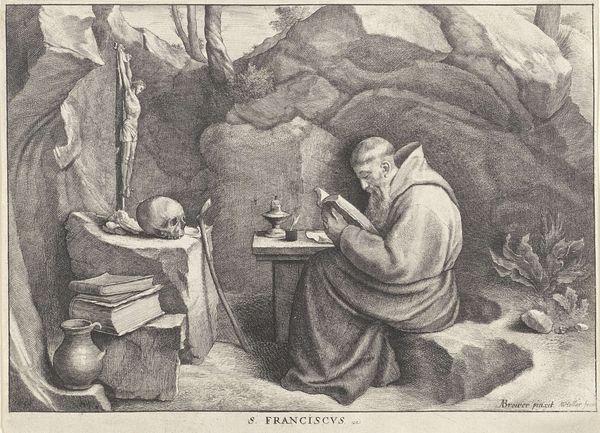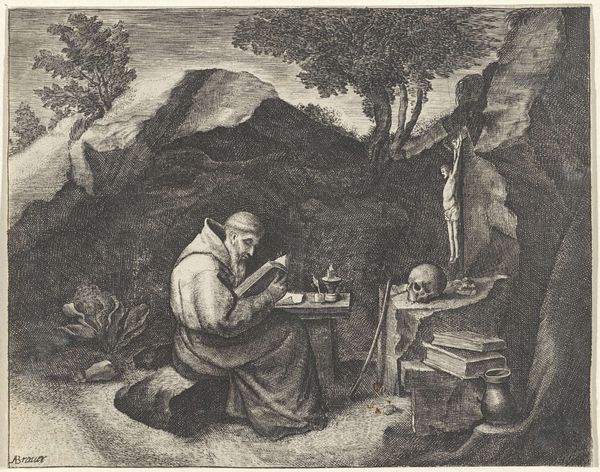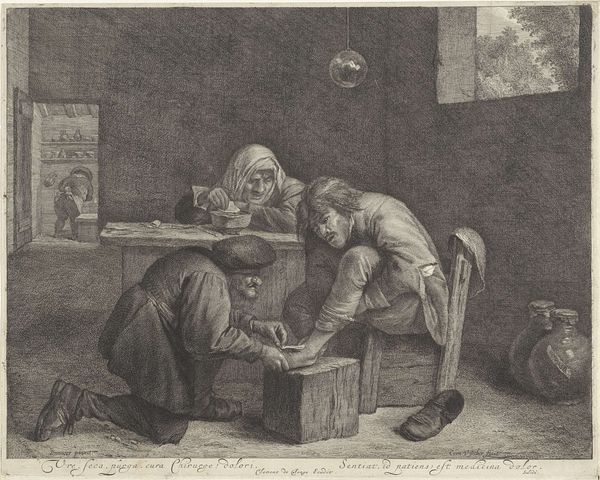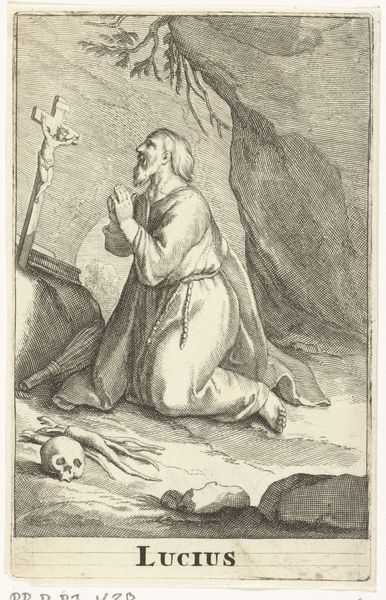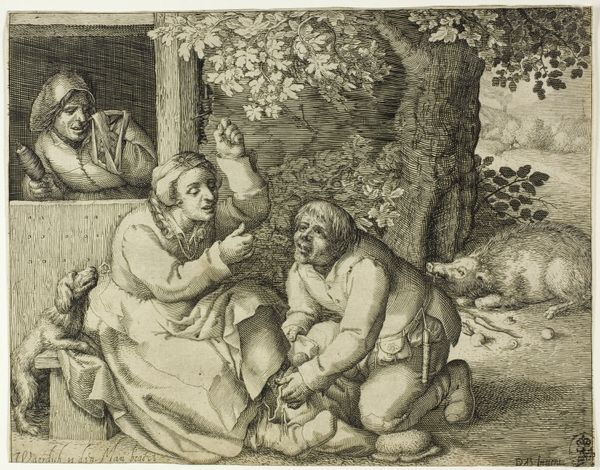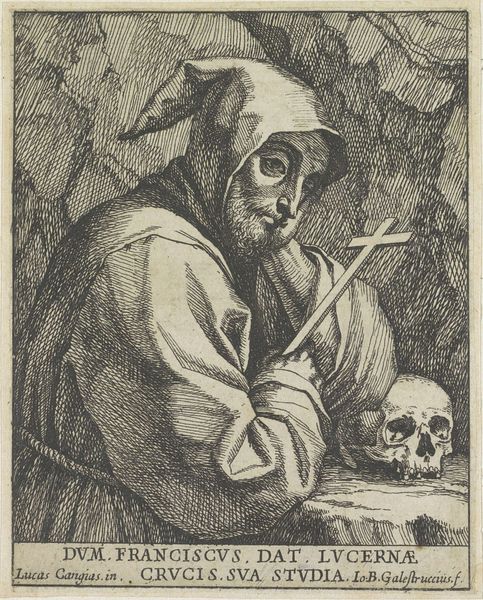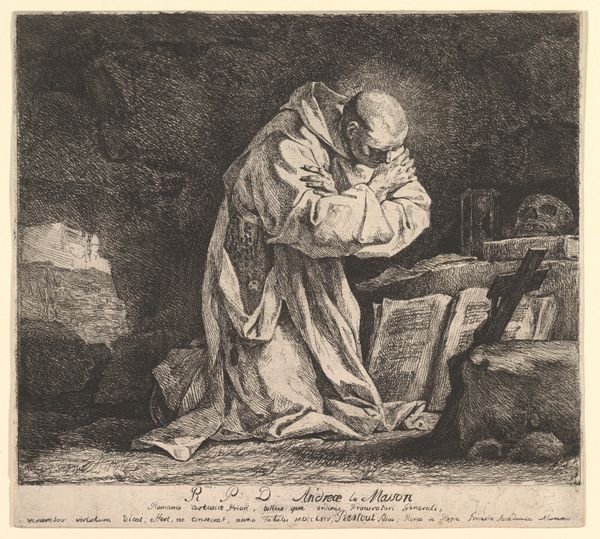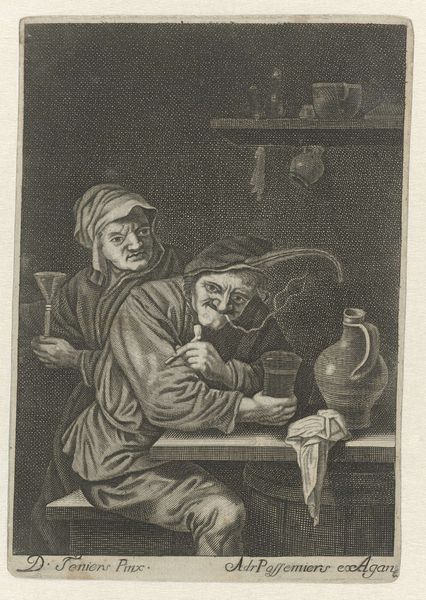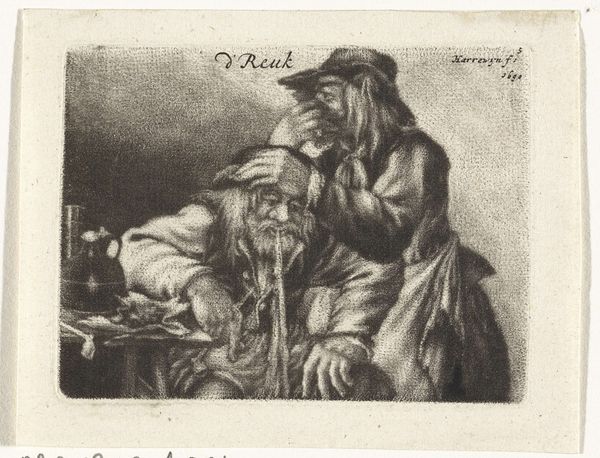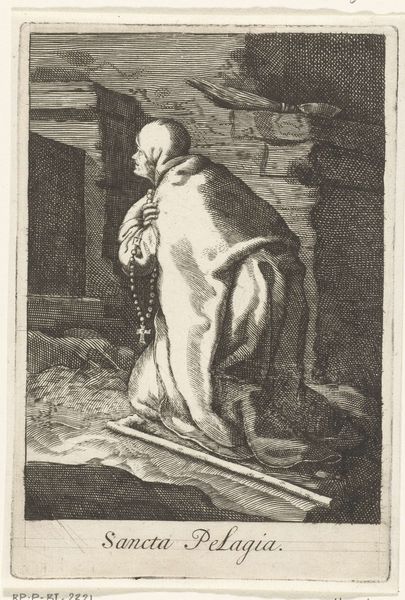
print, engraving
#
portrait
#
baroque
# print
#
old engraving style
#
personal sketchbook
#
vanitas
#
line
#
genre-painting
#
history-painting
#
engraving
#
miniature
Dimensions: height 92 mm, width 130 mm
Copyright: Rijks Museum: Open Domain
Editor: Here we have Wenceslaus Hollar’s "H. Franciscus lezend in een grot," or "St. Francis Reading in a Cave," made in 1649. It's an engraving, quite small and detailed. There’s this somber feeling to it, enhanced by the skull and crucifix. What can you tell us about its context? Curator: Well, given Hollar’s background and the political turbulence of 17th-century Europe, especially the Thirty Years' War which ended just the year before this piece, we can understand this image of St. Francis as both a religious image and a reflection of the broader cultural anxieties of the time. Editor: How so? Curator: Consider the location: a cave. It suggests retreat from society. St. Francis, removed from worldly concerns, surrounded by symbols of mortality and faith, such as the skull and crucifix, this scene presents a meditation on life's purpose in a turbulent world. Editor: So, it's not just a depiction of religious devotion, but also a commentary on society? Curator: Precisely. Hollar, active during a period marked by religious conflicts and social upheaval, often used his art to address broader philosophical and political questions, subtly embedded in seemingly simple scenes. Do you notice anything else that might relate to this tension? Editor: Now that you mention it, there's a sense of serenity in St. Francis’ posture and expression, which contrasts sharply with the rather grim imagery around him. He seems at peace, despite the ever-present reminder of death. Curator: Exactly! That very juxtaposition speaks to the artist’s layered commentary. By reflecting on the transience of life, represented by the 'vanitas' elements in the image, we can question earthly powers and concerns, encouraging a focus on more eternal values. The power of the church at that time was considerable. Editor: It’s amazing how much context changes my perception of what I initially saw as just a religious image. Curator: That’s the beauty of art history! It offers ways of seeing an artwork, its intention and influence, that may not be obvious at first glance, showing that it isn't isolated. Editor: Absolutely! I will carry these new perspectives forward. Thank you.
Comments
No comments
Be the first to comment and join the conversation on the ultimate creative platform.
